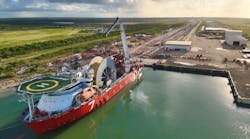Offshore staff
CAMBRIDGE, UK — TWI has initiated a joint industry project examining the benefits of combining thermally sprayed aluminum (TSA) coatings and cathodic protection (CP) to thermally cycled risers and subsea pipelines.
Current sponsors areBG, ExxonMobil, Petrobras, and Total.
Although TSA coatings are widely used to reduce the rate of corrosion on offshore facilities, there is scant published data concerning the simultaneous use with CP for when applied to subsea hot risers and hydrocarbon transportation pipelines.
With only limited attention paid to the interaction of TSA with anodes or impressed current CP systems in international standards (such as ISO 15589-2 and DNV-RP-B401), guidance remains limited.
However, many fields are under development involving installation of remote, deepwater facilities and extraction of higher-temperature hydrocarbons, which could benefit from the findings of the new JIP, TWI claims. It cites potential benefits that include:
- generation of environment-specific CP design data, providing increased confidence in the long-term reliability of TSA coatings in inaccessible, deepwater service
- longer design life with reduced maintenance costs for facilities in remote locations
- significant reduction of the anode mass on subsea structures.
The project scope includes measurement of the effects of representative environmental conditions (oil temperatures up to 130°C, or 266° F) on TSA coating and anode behavior when subject to constant elevated temperature and thermal cycling.
One of the main deliverables will be interpretation of the project results and the implications for offshore structure CP design.
05/28/2015




